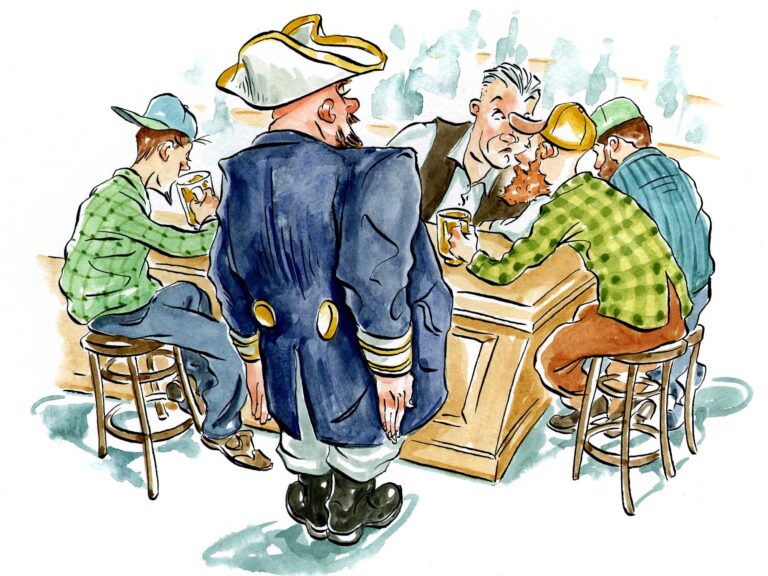In January, I attended boot Dusseldorf, known colloquially as the Dusseldorf Boat Show. Dusseldorf is the world’s largest boat show with 17 exhibition halls, 7 of which are dedicated to powerboats. In some ways, boot Dusseldorf is just like a major North American boat show: most all the major boat builders and engine makers you see at a show in Toronto or Chicago, you find on display there. Boot also features throngs of Topsider-clad boaters clamoring to board the new models, see the latest gear and maybe attend a seminar or two.
But boot Dusseldorf also differs in that there are many boats—and styles of boats—on display in Dusseldorf that we just don’t see much of on this side of the Atlantic. Are these trends that will take off here? Or, are these prevalent in Europe for reasons specific to culture and geography? At this point, I’m not ready to say. But, I would like to point out these four trends I noticed while attending boot Dusseldorf.
Electric Boats
Electric boats are much more prevalent in Europe than they are in North America. And I don’t just mean slow speed harbor launches and auxiliary sailboats either. I boarded any number of boats with center console or small cabin layouts in the 20 to 30 foot long range that could deliver planing performance for maybe an hour, and still allow you to enjoy a few more hours under power (at slow speed) before needing to be recharged. In other words, these boas could deliver an, “average afternoon on the water. “ Consider this notional trip: You run at 25 knots to a beach, anchor and swim for a while; then, you slowly troll for fish for an hour; next , lines up and you zoom at 25 knots for 15 minutes to a lunch spot; next, you cruise slowly towards home for an hour, enjoying each other’s company and the view; the final mile is a burst of speed to the dock and you still have an hour’s worth of trolling speed ability in reserve. The batteries charge overnight on a 15-amp circuit. Such boats are real. Check out for example.
Now certainly, many boaters need, or want, more range, more sustained speed and quicker refueling than the above scenario offers, but one has to admit hat for many boaters, the above describes a typical days use on the water.I think we will see more such boats in North America.
Boats With Plumb Stems
The stem is the very bow of the boat between the waterline and the deck. (In a wood boat it’s an actual separate structural member; for fiberglass boats the term serves as a simple location descriptor. ) This looks very dramatic. It also lengthens he boats waterline, a good thing on displacement craft, since speed for such boats is a function of waterline length ( Remember: Hull Speed = 1.34 x W/L ). And it can offer more space inside the boat, in the form of increased headroom in a forward cabin, as an example.
The feature may also make a boat ride wetter than a comparable planing boat with the more common raked stem, since it will tend more towards punching through waves rather than riding over. Of course the rub lies in, “all things being equal,” which they often aren’t in comparing boats. I put together the following video to show just how popular this design element is in Europe.
Will plumb stem style cross the ocean? Marquis Yachts M42 boast the feature. Also, the Chris-Craft Carina (a model name selected during a contest held on Boating’s Facebook, by the way) displays a sort of hybrid: the bow is raked to the chine and then vertical from there to the deck line. We’ll have to wait to see if more follow.
Fly Bridge Boats
The flying bridge is alive and well in Europe, even aboard boats under 40 feet in length overall (LOA). At one time, this style cruiser was very prevalent on North American waters, with builders as diverse as Bayliner and Bertram building “ bridge boats,” starting at as small as 25 feet LOA. One that caught our eye was the Nimbus Paragon 31 Fly. Nowadays one must look to custom boats large yachts or the used classic boat market to find a small flybridge. The Jeanneau NC 38 FLY shown is available in North America, but stands out for being almost a category of one.
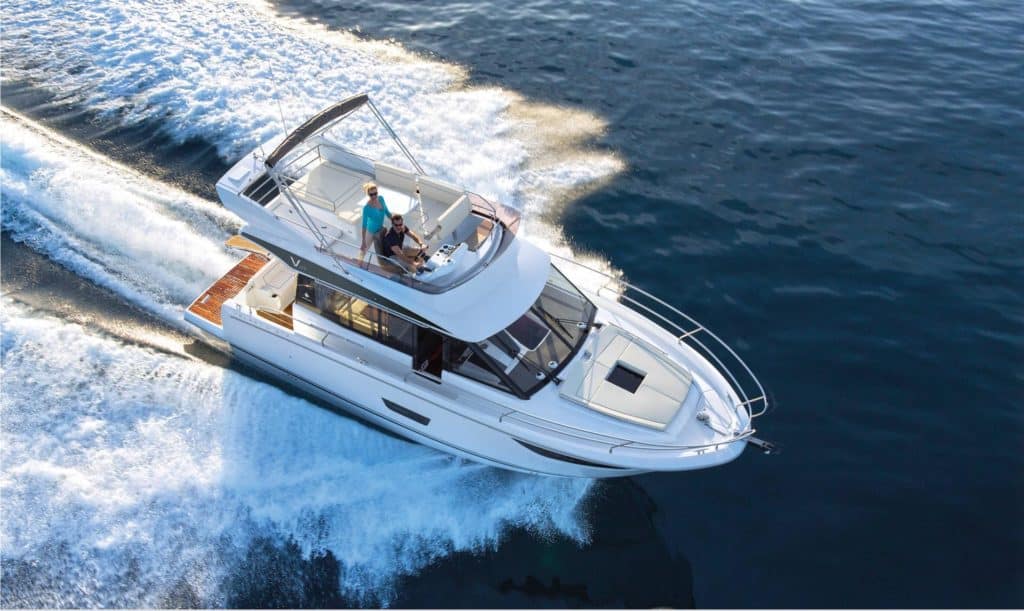
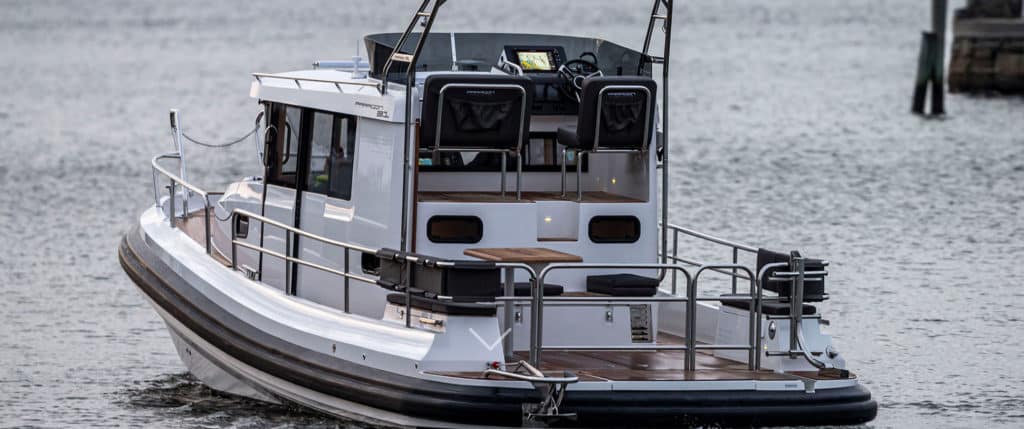
Small Cabin Boats
Here’s another class that used to be prevalent in North America, whether we recall the Winner Escape of the 1950’s, Chris-Craft Cavalier of the 1960’s Wellcraft Airlslot of the 1970’s, Grady-White of the 1980s, or Bayliner Capri Cuddy of the 1990s, small cabin boats were once, “everywhere,” but are much less popular –at least as new boats—here in North America now.
But at boot Dusseldorf, I saw dozens of cabin boats starting at the diminutive size of 15 feet long.
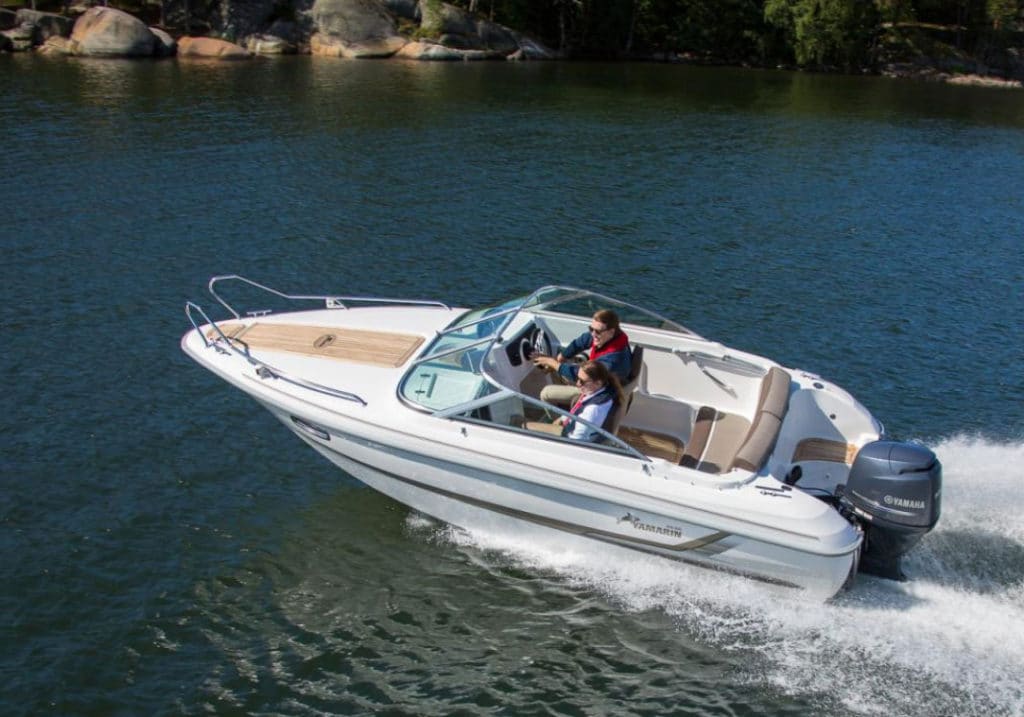
Will small cabin boats return to new boat popularity here in North America? I’d like to see it, since I think they make great entry boats to the lifestyle.
RIBs
You knew this already, maybe. But, rigid inflatable boats, RIBs, are very popular in Europe, and have been for a very long time. In North America, RIBs are prevalent as dinghys and tenders; in Europe RIBs are a primary boat for many people. Some even have tenders of their own!
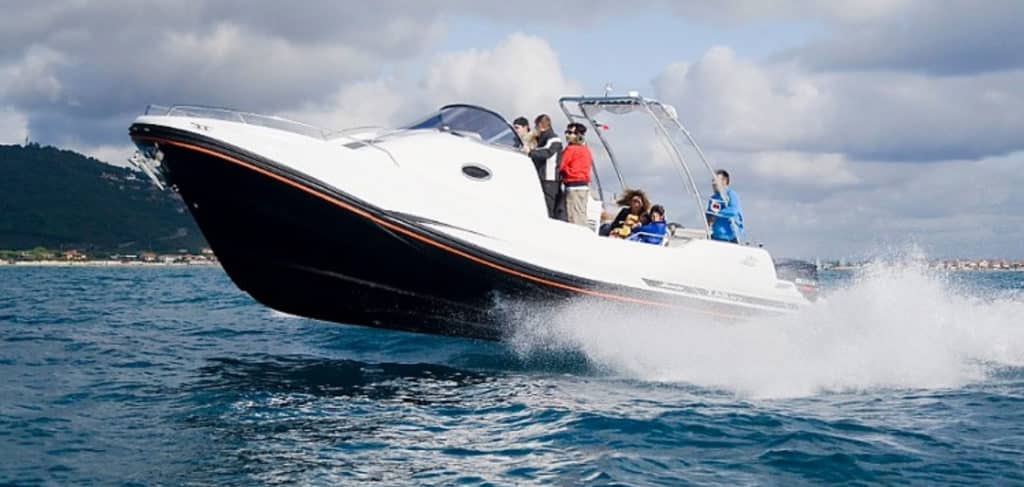
At boot Dusseldorf, there were many dozens of RIBS on display, ranging from family runabouts, to cruisers to high performance “superboat,” types ranging to 50 feet in length.
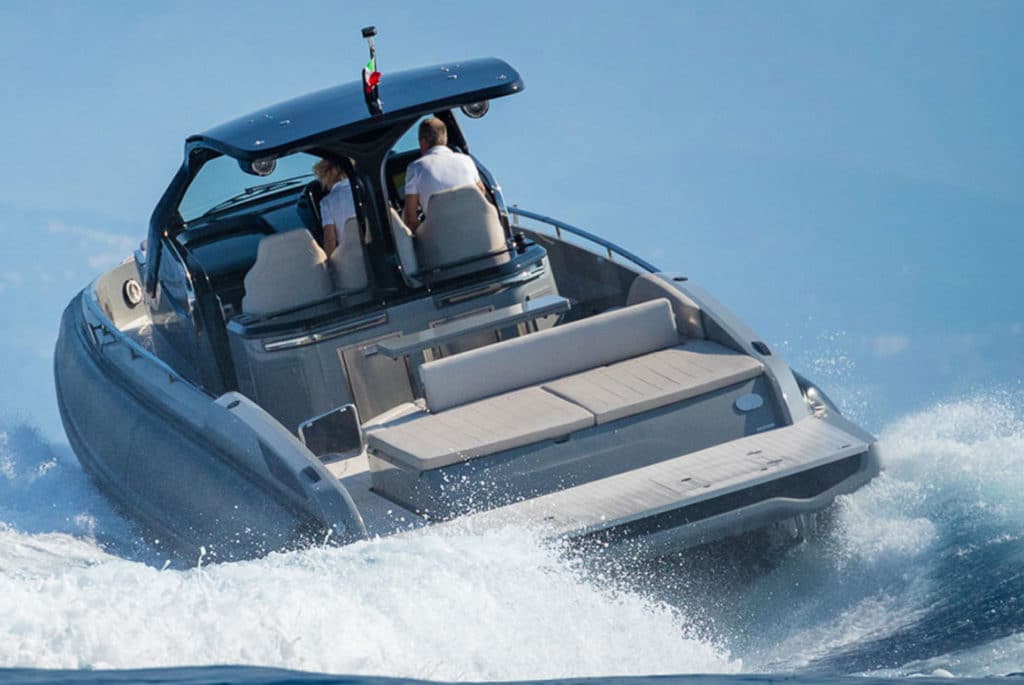
The Zar Fomenti (One of the few NMMA-certified RIB makers) Skydeck model shown is indicative of a mid-size boat family can enjoy for a multitude of purposes. RIBs ride great, having a narrower hull than a “regular” boat of comparable length, and because the inflatable collar absorbs shock and deadens vibration. A RIB is also lighter for the length, meaning its faster and more efficient with the same power and it can be towed with a smaller vehicle. A RIB is very resistant to pitching and rolling. And, that whole, “built-in fender,” thing can come in handy!
Read Next: The World’s Biggest Boat Show: Boot Dusseldorf
Will RIBs catch on? We’ll see.
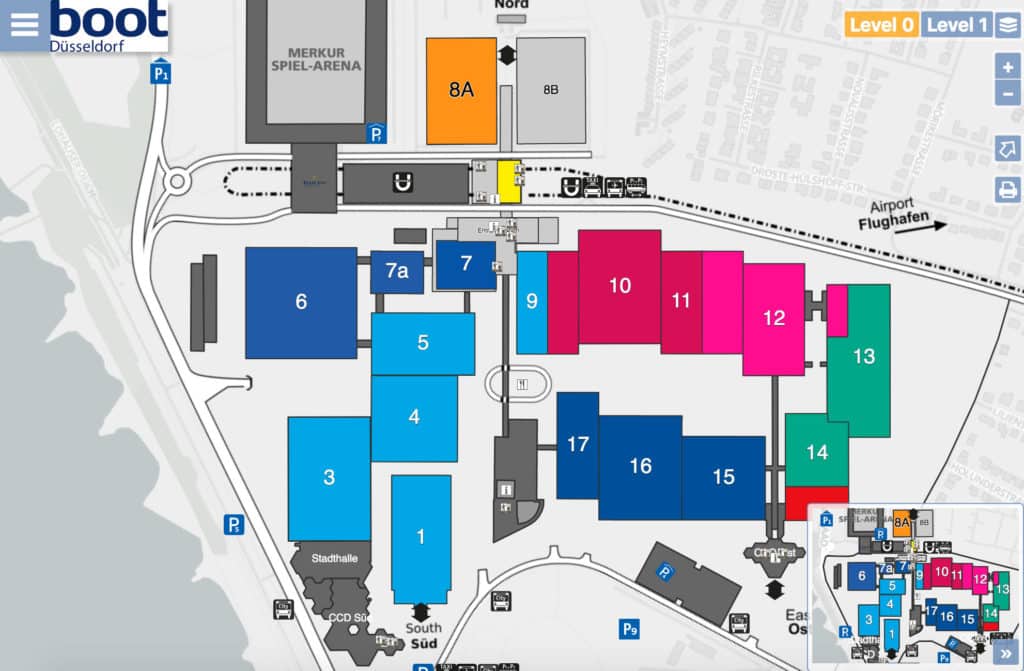
For more about boot Dusseldorf, visit: https://www.boot.com/en/Visitors/Overview_Visitors
Insert image BOOTDUS here





